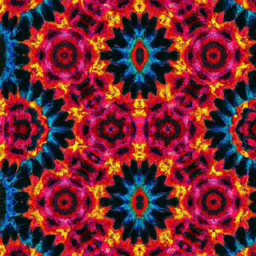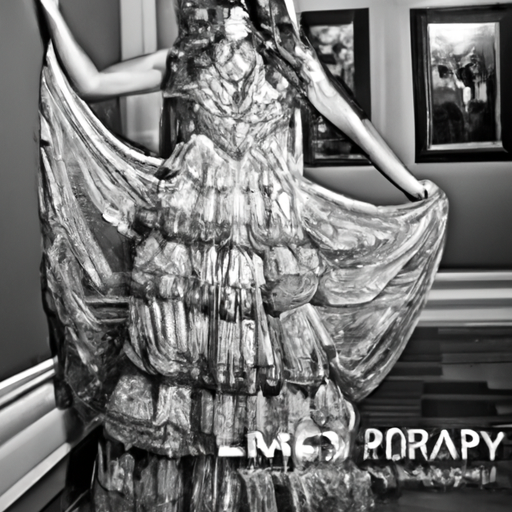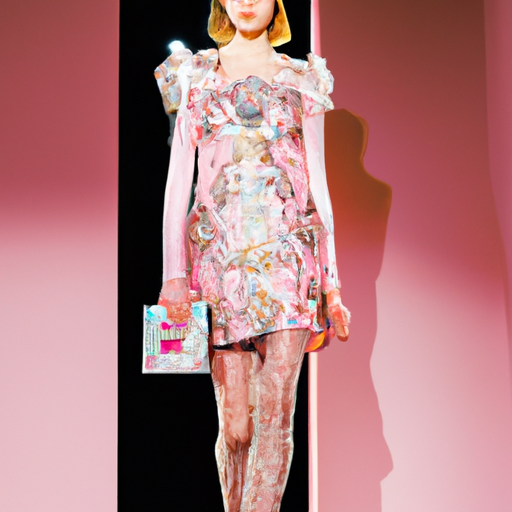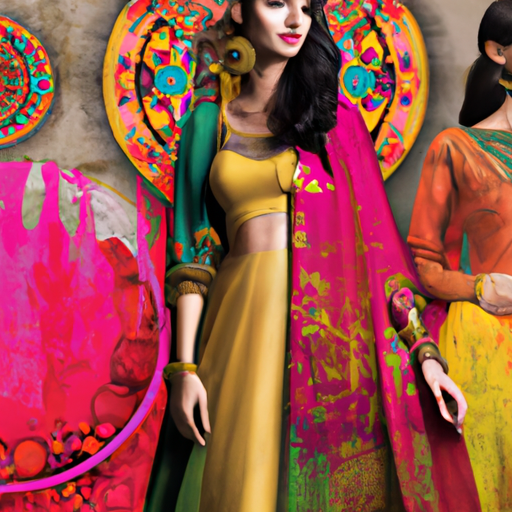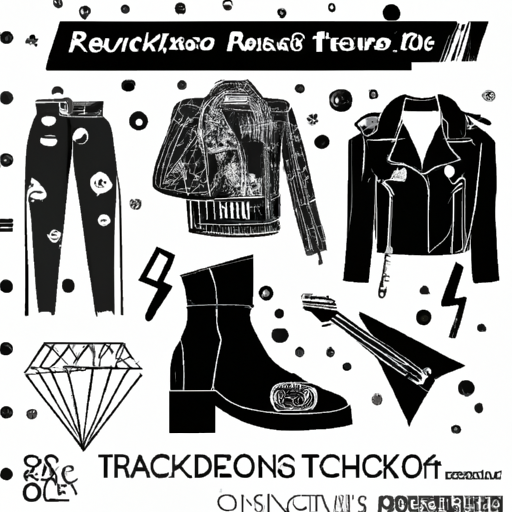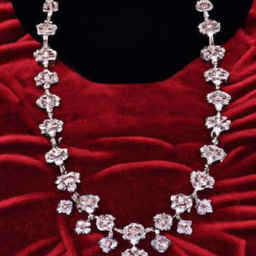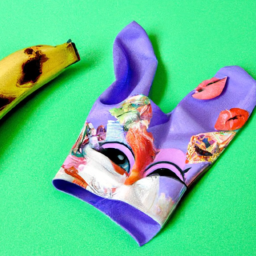How Often Do Fashion Trends Change?
Fashion trends are notorious for their ever-changing nature. Just when you think you’ve got the latest style down, a new trend emerges, leaving you wondering how often these shifts actually occur. In the realm of fashion, it seems like staying up-to-date requires a constant vigilance, but just how often do fashion trends really change? Is it a matter of days, weeks, or months? Let’s explore the ever-evolving world of fashion to understand the rhythm of its trends.
Table of Contents
The Nature of Fashion Trends
Fashion trends are constantly evolving and changing, reflecting the ever-changing preferences and tastes of individuals. At its core, fashion trends refer to the popular styles, patterns, and designs that dominate the industry at a particular time. These trends can encompass various aspects of fashion, including clothing, accessories, footwear, makeup, and hairstyles. The nature of fashion trends is dynamic and fluid, making it an exciting and ever-evolving field.
Definition of Fashion Trends
Fashion trends can be defined as the prevailing styles and preferences that are embraced and followed by a significant number of individuals within a given time frame. They are a reflection of the collective taste and preferences of the masses, influenced by a multitude of factors. These trends can be observed in various aspects of fashion, such as clothing styles, colors, patterns, and even cultural influences.
Factors Influencing Fashion Trends
Fashion trends are influenced by a plethora of factors that shape and mold the preferences of individuals. One of the key factors is the media, including magazines, television shows, and online platforms, which play a vital role in disseminating information about the latest trends. Additionally, celebrities, fashion influencers, and designers also have a significant impact on the direction of fashion trends. Social and cultural influences, technological advancements, and economic factors also contribute to shaping fashion trends.
The Role of Fashion Influencers
In recent years, the role of fashion influencers has become increasingly significant in shaping and dictating fashion trends. Fashion influencers are individuals with a significant following on social media platforms and have considerable influence over their followers’ fashion choices. These influencers often collaborate with brands, attend fashion weeks, and showcase their personal styles, thereby setting trends that are quickly adopted by their followers. Their power lies in their ability to connect with their audience and inspire them to try new styles and experiment with their fashion choices.
Seasonal Fashion Trends
Fashion trends often vary based on the seasons, with different styles and aesthetics gaining popularity during different times of the year. Understanding and embracing these seasonal fashion trends allows individuals to stay up-to-date with the latest styles and make appropriate fashion choices.
Spring/Summer Trends
Spring and summer fashion trends tend to lean towards lighter fabrics, brighter colors, and playful designs. Some popular trends during this time include floral prints, pastel shades, flowy dresses, and breathable materials such as linen and cotton. Accessories like straw hats, wedges, and sunglasses also complement the overall summer aesthetic.
Fall/Winter Trends
Fall and winter fashion trends shift towards warmer and cozier styles. This includes layering outfits, incorporating textured fabrics like wool and cashmere, and opting for deeper colors like burgundy, navy, and emerald green. Sweaters, coats, boots, and scarves are staples during this season, allowing for stylish yet functional outfits.
Transitioning Between Seasons
Transitioning between seasons can sometimes be a challenge when it comes to fashion trends. However, key pieces like lightweight jackets, versatile dresses, and layered outfits can help bridge the gap between different seasons. Additionally, experimenting with accessories like scarves, hats, and statement pieces can add a touch of style while staying adaptable to changing temperatures.
Yearly Fashion Trends
Yearly fashion trends often revolve around key events and themes that dictate the overall aesthetic for that year. These trends can be influenced by various factors, such as the Pantone color of the year, fashion weeks, and the fashion industry as a whole.
Annual Pantone Color of the Year
Each year, the Pantone Color Institute announces a color of the year that sets the tone for the fashion and design industries. This color choice influences fashion trends, as designers and brands incorporate it into their collections and individuals seek to incorporate it into their wardrobes. The chosen color often reflects both current cultural moods and future aspirations, inspiring creativity and influencing fashion choices.
Fashion Weeks and Runway Shows
Fashion weeks, held in major fashion capitals around the world, are highly anticipated events that showcase the latest designs and trends. Designers present their collections on the runway, providing a glimpse into the upcoming fashion trends for the year. These runway shows set the tone for the industry and influence the seasonal and yearly trends that individuals follow.
Key Trends for Each Year
Apart from the overarching themes set by events like fashion weeks and the Pantone color of the year, specific fashion trends emerge annually. These trends can range from popular clothing styles to accessories, prints, and even skincare and beauty trends. They are often influenced by the current cultural, social, and political climate, as well as the rise of sustainability and inclusivity in the fashion industry.
Long-Term Trends
While fashion trends are known for their ever-changing nature, certain trends have a more long-term impact and continue to influence the industry for extended periods.
Decade-Specific Fashion Trends
Fashion trends from specific decades often experience revivals and influence current styles. Iconic fashion trends from the 1920s, such as flapper dresses and Art Deco-inspired designs, are still celebrated today. Similarly, the bold and vibrant styles of the 1980s, with their shoulder pads and neon colors, have made comebacks in recent years. These decade-specific trends serve as a reminder of the cyclical nature of fashion and the enduring influence of the past.
Revivals of Past Fashion Trends
Fashion trends have a way of resurfacing, with past styles being revived and reimagined by designers and fashion enthusiasts. Vintage clothing and retro styles often gain popularity among those seeking a unique and nostalgic aesthetic. The resurgence of trends like high-waisted jeans, bell-bottoms, and platform shoes showcases the enduring appeal of these iconic styles.
Cultural and Historical Influences
Fashion trends also draw inspiration from various cultural and historical influences. Designers and brands often incorporate elements from different cultures, paying homage to their traditions and aesthetics. This fusion of styles creates unique and diverse fashion trends that celebrate global influences and encourage cultural exchange.
Rapidly Changing Trends
In contrast to long-term trends, some fashion trends emerge and evolve at a rapid pace, fueled by factors such as the fast fashion industry, social media, and celebrity influences.
Fast Fashion Industry
The rise of the fast fashion industry has led to an accelerated turnover of trends. Fast fashion brands produce affordable clothing at a rapid pace, allowing consumers to quickly embrace and discard trends. This fast-paced production and consumption cycle often result in shorter lifespans for fashion trends, as new styles are constantly churned out to meet consumer demands.
Social Media and Influence
Social media platforms have transformed the fashion industry, offering individuals a platform to showcase their personal style and inspiring others to follow suit. Fashion influencers, as mentioned earlier, play a crucial role in shaping trends through their online presence. Platforms like Instagram, TikTok, and Pinterest have become hubs for fashion inspiration, with users sharing outfit ideas, styling tips, and their favorite trends.
Celebrity and Red Carpet Trends
Celebrities, particularly those who regularly attend red carpet events and award shows, have a significant impact on fashion trends. Their outfits and fashion choices are often closely scrutinized and emulated by the public. Designers and brands eagerly collaborate with celebrities, knowing that their endorsement can catapult a trend to mainstream popularity. The red carpet serves as a platform for showcasing cutting-edge designs, influencing the fashion choices of individuals around the world.
Slow-Changing Trends
Amidst the rapidly changing fashion landscape, some trends have stood the test of time, remaining relevant and in vogue for years, if not decades.
Classic Fashion Pieces
Classic fashion pieces, such as the little black dress, tailored blazers, and white button-down shirts, are timeless items that transcend changing trends. These pieces form the foundation of a versatile and timeless wardrobe, capable of being styled in multiple ways for various occasions. Classic fashion pieces serve as reliable go-to options, ensuring that individuals remain fashionable regardless of changing trends.
Timeless Styles
Certain styles have proven to be enduring and never go out of fashion. For example, a well-fitted pair of jeans, a simple white t-shirt, and a classic trench coat are items that have remained stylish and relevant throughout the years. These styles are characterized by their simplicity, versatility, and ability to seamlessly integrate into different fashion eras and trends.
Sustainable Fashion
With the growing awareness surrounding environmental and ethical issues, sustainable fashion has gained popularity as a slow-changing trend. As individuals become more conscious of the impact of their fashion choices, sustainable fashion offers an alternative to the fast fashion industry. Eco-friendly materials, ethical production processes, and a focus on durability and timeless designs are key aspects of sustainable fashion. This trend promotes the importance of conscious consumption and encourages individuals to invest in high-quality, long-lasting pieces.
Regional and Cultural Trends
Fashion trends vary across different regions and cultures, reflecting the local traditions, climate, and societal influences. Understanding and embracing these regional and cultural trends allows individuals to appreciate the diversity and uniqueness of fashion around the world.
Global Fashion Capitals
Various cities worldwide are renowned as global fashion capitals due to their significant influence on the fashion industry. Cities like Paris, Milan, London, and New York host fashion weeks, attract renowned designers, and showcase cutting-edge collections. These cities often set the tone and direction for global fashion trends, with their distinct styles and aesthetics deeply ingrained in the fashion world.
Street Fashion and Subcultures
Street fashion and subcultures play a vital role in shaping fashion trends. Individuals often draw inspiration from urban street fashion and subcultural styles, such as punk, goth, hip-hop, and skater fashion. These styles represent alternative and rebellious fashion choices, standing in contrast to mainstream trends. Street fashion and subcultures serve as a platform for self-expression and creativity, allowing individuals to deviate from conventional fashion norms.
Ethnic and Traditional Influences
Ethnic and traditional influences contribute to the rich tapestry of global fashion trends. Traditional clothing, fabrics, and techniques from various cultures influence fashion designers, leading to the creation of unique and culturally-inspired collections. Fashion brands often collaborate with artisans and indigenous communities, further showcasing the beauty and diversity of different cultures. Ethnic and traditional influences expand the boundaries of fashion and foster appreciation for cultural heritage.
Gender-Specific Trends
Fashion trends are not limited to a single gender, with different styles and aesthetics catering to both men and women. Recognizing and embracing gender-specific trends allows individuals to express their personal style while staying updated with the latest fashion choices.
Women’s Fashion Trends
Women’s fashion trends encompass a wide array of styles, ranging from dresses, skirts, and blouses to jumpsuits, athleisure wear, and swimwear. Trends for women can vary significantly depending on the season, current cultural influences, and the prevailing themes in the fashion industry. These trends reflect the diverse tastes, preferences, and lifestyles of women around the world.
Men’s Fashion Trends
Men’s fashion trends have evolved over the years, offering a wide range of styles and aesthetics. From tailored suits and classic formal wear to casual streetwear and sportswear, men’s fashion trends are influenced by factors like cultural shifts, subcultures, and societal norms. The focus on men’s fashion has expanded, encouraging individuality and creativity in personal style choices.
Gender-Neutral Fashion
Gender-neutral fashion is an emerging trend that seeks to break traditional gender norms in fashion. This style allows individuals to express themselves freely without conforming to gender-specific clothing options. Gender-neutral fashion promotes inclusivity, offering a space for self-expression regardless of gender identity. It challenges the binary divisions often seen in fashion and opens up possibilities for creative and individualistic fashion choices.
Age-Specific Trends
Fashion trends also cater to different age groups, acknowledging the diverse fashion preferences and needs of individuals at various stages of life. Age-specific trends embrace the beauty of each generation while providing fashionable options that resonate with different age groups.
Teenage Fashion Trends
Teenage fashion trends are often characterized by their youthful energy and sense of experimentation. As teenagers explore their personal style, they gravitate towards trends that reflect their individuality and help them express their identity. These trends can range from bold prints and colors to streetwear-inspired styles, reflecting their engagement with pop culture and subcultures.
Young Adult Fashion Trends
Young adults typically seek a balance between style and functionality as they navigate their professional and social lives. Fashion trends for young adults often incorporate versatile pieces that can transition seamlessly from day to night. This can include sophisticated yet trendy outfits, versatile layering options, and a mix of casual and formal styles.
Fashion for Older Generations
Fashion trends for older generations focus on timeless elegance, comfort, and functionality. As individuals age, their priorities often shift towards practicality, quality, and pieces that enhance their confidence and personal style. Fashion trends for older generations often include classic, tailored pieces, neutral color palettes, and high-quality fabrics that withstand the test of time.
Economic Influences on Fashion Trends
Economic factors play a significant role in shaping and influencing fashion trends, as they impact the accessibility and affordability of certain styles and materials.
The Effect of Economic Downturns
During times of economic downturns or recessions, fashion trends often reflect a more practical and budget-conscious approach. Individuals tend to opt for timeless styles and invest in versatile pieces that can be worn for an extended period. Additionally, the demand for affordable fashion increases, leading to the rise of fast fashion brands that cater to budget-conscious consumers.
Luxury Fashion Trends
On the other end of the spectrum, luxury fashion trends cater to individuals with higher purchasing power. These trends often feature high-quality materials, intricate designs, and exclusive collaborations. Luxury fashion trends are influenced by the aspirational desires of individuals seeking unique and high-end fashion choices.
Affordable Fashion Trends
Affordable fashion trends cater to individuals who prioritize budget-friendly options without compromising on style. Fast fashion brands, online retailers, and second-hand markets offer affordable alternatives to expensive designer pieces. These trends make fashion accessible to a wider audience, allowing individuals to experiment with different styles and keep up with the latest trends without breaking the bank.
In conclusion, fashion trends are a dynamic and ever-changing aspect of the fashion industry. They are influenced by various factors, including media, celebrities, cultural influences, technology, and economic considerations. From seasonal trends to long-term fashion choices, fashion continues to evolve, embracing both personal style and societal influences. Understanding the nature of fashion trends allows individuals to navigate the ever-changing landscape while expressing their personal style and embracing the diversity and creativity that fashion offers.
